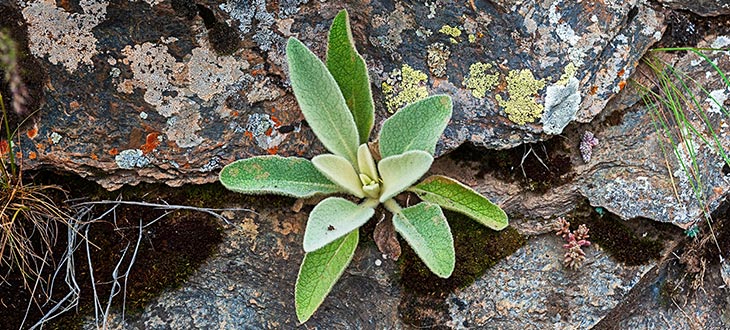3 Mullein Look-Alikes
Did you find a plant that looks like mullein and you want to ensure you identify it correctly? Here’s how to recognize mullein and several of its look-alikes.
Mullein is the common name collectively used for the plants in the genus Verbascum, family Scrophulariaceae. This genus includes mostly biennial or perennial species which are native to Europe and Asia.
Although mulleins are not very troublesome, they are listed as noxious weeds in some parts of the world. They can become invasive, especially in temperate regions, frequently growing in pastures, roadsides, disturbed areas, or even in gardens.
The Verbascum genus includes over 400 species of plants. Although they are generally called “mulleins,” not all have the same look and features. Thus, we will only refer to the most common species of mullein, which is Verbascum thapsus, also known as the “common mullein.”
How To Identify Common Mullein
Common mullein (Verbascum thapsus) is a biennial plant that can grow 6.5 feet (2m) or more in height. It is also commonly known as great mullein or greater mullein.
It is usually pretty easily recognizable because of its particularities and especially because all the plant parts are covered in dense, soft hairs.
The leaves of common mullein are silvery-green and grow as a basal rosette in the plant’s first year of life. They have an oblong to lanceolate shape and are covered in dense hair that gives them a velvety feel.
The basal leaves can reach sizes of up to 20 inches (50 cm) in length and about 5 inches (14cm) wide.
In the second year, the plant develops an unbranched or rarely branched, upright stalk with leaves growing alternately on it and becoming smaller towards the top.
In its blooming period, the common mullein produces dense spikes of small yellow flowers at the top of the stems.

Although the common mullein is often easy to identify, there are several plants that have a look that closely resembles mullein. Hence, further, we will list some of the most common mullein look-alikes.
1. Lamb’s Ear (Stachys Byzantina)
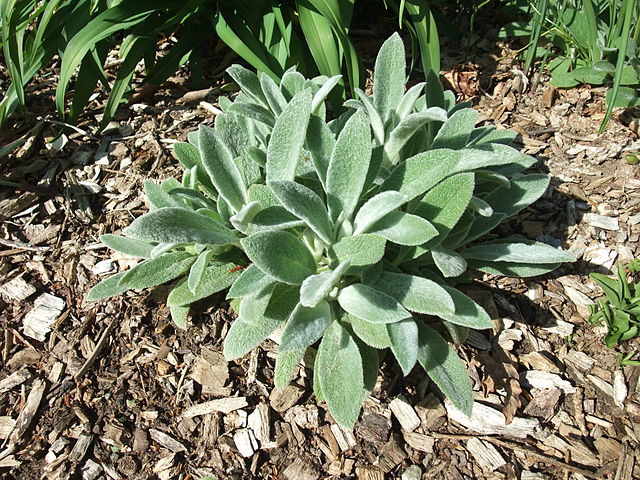
Lamb’s Ear (Stachys byzantina) is a species of perennial plant in the family Lamiaceae, native to Armenia, Turkey, and Iran and frequently grown as an ornamental plant in temperate climates. It is also commonly known as woolly hedgenettle.
Stachys byzantina looks very similar to mullein, especially in its early development stage before the plant blooms.
Lamb’s ear grows shorter than the common mullein, rarely exceeding a height of 31 inches (80 cm) when the plant produces the flowering stalk.
The leaves of Stachys byzantina have an oblong-elliptic shape, are thick, have a green-silvery-grey color, and are covered with a soft white fur-like coating. Overall, they look similar to a lamb’s ear, hence the plant’s popular name.
In its blooming season (spring to early summer) lamb’s ear grows spike-like stems. Over most of their length, the plant produces multiple small and crowded purple flowers.
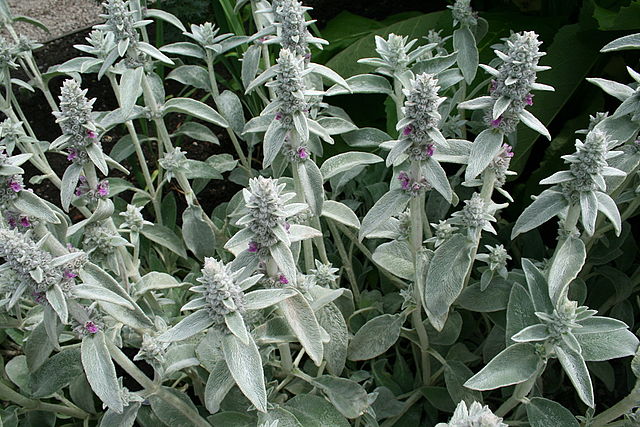
The flowering stems also carry leaves, but these have a reduced size.
2. Foxglove (Digitalis Purpurea)

Foxglove (Digitalis purpurea) is a species of biennial plant native to Europe but naturalized in temperate regions of North America and other parts of the world. It is also known as common foxglove.
This plant contains potent toxins. Its leaves, seeds, and flowers are all poisonous to humans and to many species of animals. Hence, its parts should not be consumed by any means.
Foxglove develops only as a rosette of leaves at ground level in the first year. In the second year, it grows flowering stems that can exceed 50 inches (1.2m) in height.
The leaves are dark green, broad, have serrated margins, and are covered with gray-white hairs, which gives them a furry texture. This makes foxglove look like mullein in some growing stages and can be easily mistaken with it.
Foxglove produces tubular flowers that grow in an elongated cluster at the top of the flowering stems. The flowers are generally purple but those of some varieties may be pink, white, or yellow.
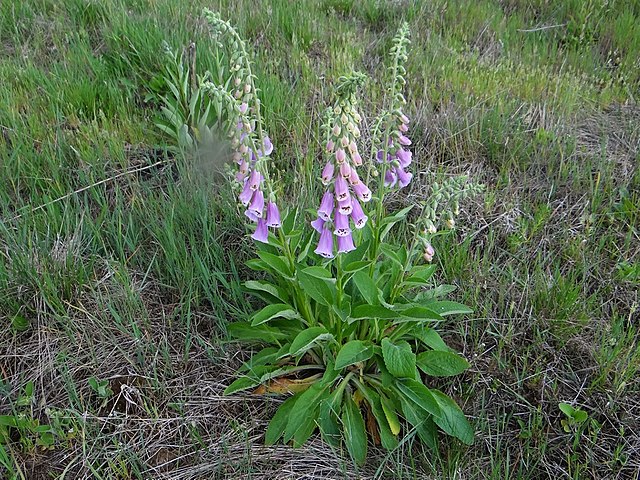
The fruit of this plant is a capsule that splits open at maturity and releases many small seeds that will give birth to the next generation of plants.
Foxglove is cultivated as an ornamental plant, but it is also frequently found growing on mountainsides, in woodland clearings, and on disturbed sites.
3. Common Comfrey (Symphytum Officinale)
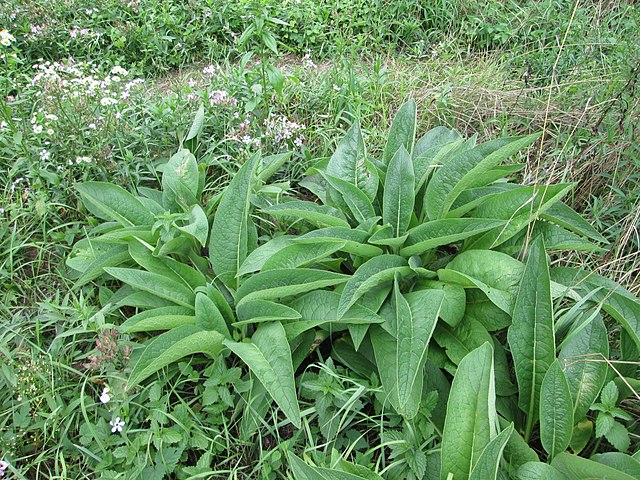
Common comfrey (Symphytum officinale) is a perennial plant native to Europe but introduced in many other regions of the world, including North America and Asia. It is also known as true comfrey, quaker comfrey, boneset, and several other names.
Although there are noticeable differences between common comfrey and mullein, these two plants can be mistaken for each other.
This plant is frequently found growing in damp grasslands, riverbanks, and ditches, but was also cultivated over time for medicinal use. Comfrey contains pyrrolizidine alkaloids which are toxic to humans and livestock.
Symphytum officinale develops initially as a leaf rosette and then forms the stems, growing up to 35 inches (90cm) in height.
Leaves are dark green, lance-shaped to oval, covered with stiff hairs, and decrease in size towards the top of the plant.
In the blooming season (late spring to early summer), common comfrey produces clusters of drooping bell-shaped flowers that are generally purple or pale yellow in color.
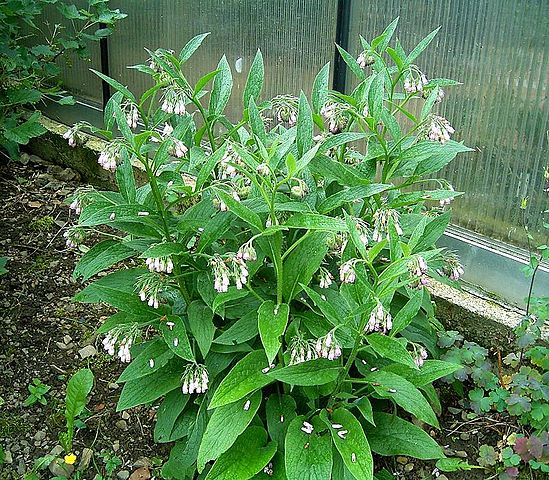
Final Word
Common mullein is a common weed found throughout the world. This plant is known primarily for the dense hair covering its parts and its wooly look.
Although it is not a very challenging plant to identify, having some rather distinctive characteristics, there are several other plants that resemble mullein and can be easily confused.
This article has included some plant species that look the most like mullein. The next time you come across this plant or one of the look-alikes, you should be able to correctly and quickly identify it.

